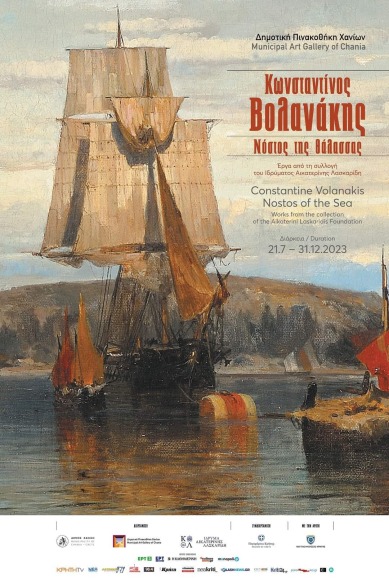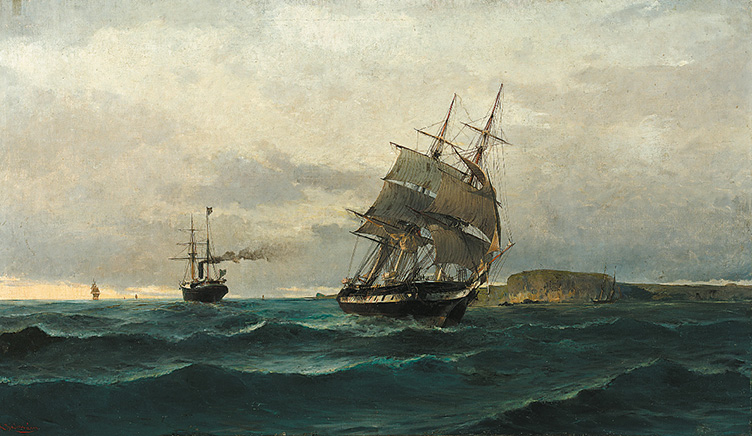It is the first time that the leading Greek marine painter, Constantine Volanakis, “returns” to his native island of Crete.
The 57 works of the painter of imperial triumphs, glorious moments in Greek history and humble fishing boats make up the exhibition “Constantine Volanakis: Nostos of the Sea: works from the collection of the Aikaterini Laskaridis Foundation”, held under the auspices of the H.E. President of the Republic, Katerina Sakellaropoulou. The exhibition also includes oil paintings belonging to the Naval Headquarters, the Greek Parliament and the Bank of Greece.
Ancient Greek triremes, riggers, steamships and boats, captured in legendary naval battles, torchings and everyday scenes are “docked” on the canvases of the painter, who, though being one of the most important representatives of the Munich School, bypassed ethographic subjects and portraits – a trend followed by most artists of that school – and devoted himself obsessively to the sea and life revolving around it.
The exhibition Constantine Volanakis: Nostos of the Sea, works from the collection of the Aikaterini Laskaridis Foundation is the first presentation of the painter’s work in his native Crete, 186 years after his birth and 172 years after he moved with his family to Syros.
If one Greek visual artist can claim to have contended with the vastness of the sea, then it is none other than Constantine Volanakis (1837-1907). His artistic output, extending over nearly half a century, covering almost the entire second half of the 19th century and the first years of the 20th century, yielded a body of work unsurpassed in quantity and quality. The fact that he was not rewarded, at least as much as he should have been, by his art in his lifetime relates to the state of modern Greek art and, more broadly, to the historical realities in Greece at that time; the fact that he is now duly honoured – and commercially overvalued – is again related to present day modern Greek reality.
“What is certain is that Constantine Volanakis’ paintbrush depicted the sea and above all its world, in a unique way, thus enshrining, artistically and culturally, the most emblematic element and field of the Greek world, seamanship,” notes, among other things, the curator of the exhibition, art historian and curator of the art collection of the Hellenic Parliament, Thodoris Koutsogiannis.
The exhibition will be accompanied by a, fully illustrated in colour, bilingual (Greek-English) catalogue. During the exhibition there will be guided tours for adults and educational programmes for students of all school levels.

